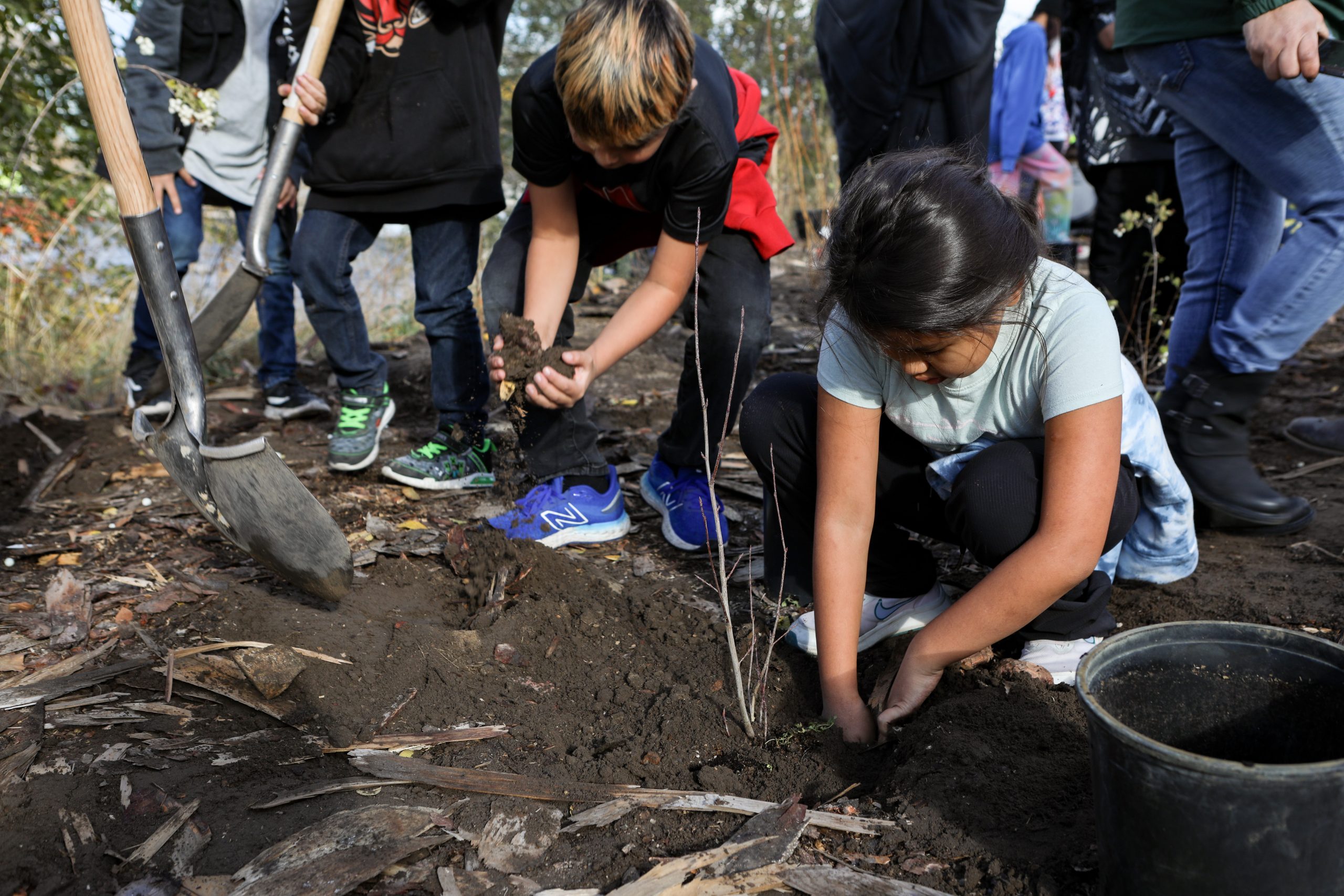‘It was terrifying’ says one of six people allowed to document mass arrest
‘No one was choosing to violate the injunction and get arrested. That should be up to each person, and it seems like the RCMP made the decision yesterday,’ says Torrance Coste who witnessed 55 people be arrested Tuesday.
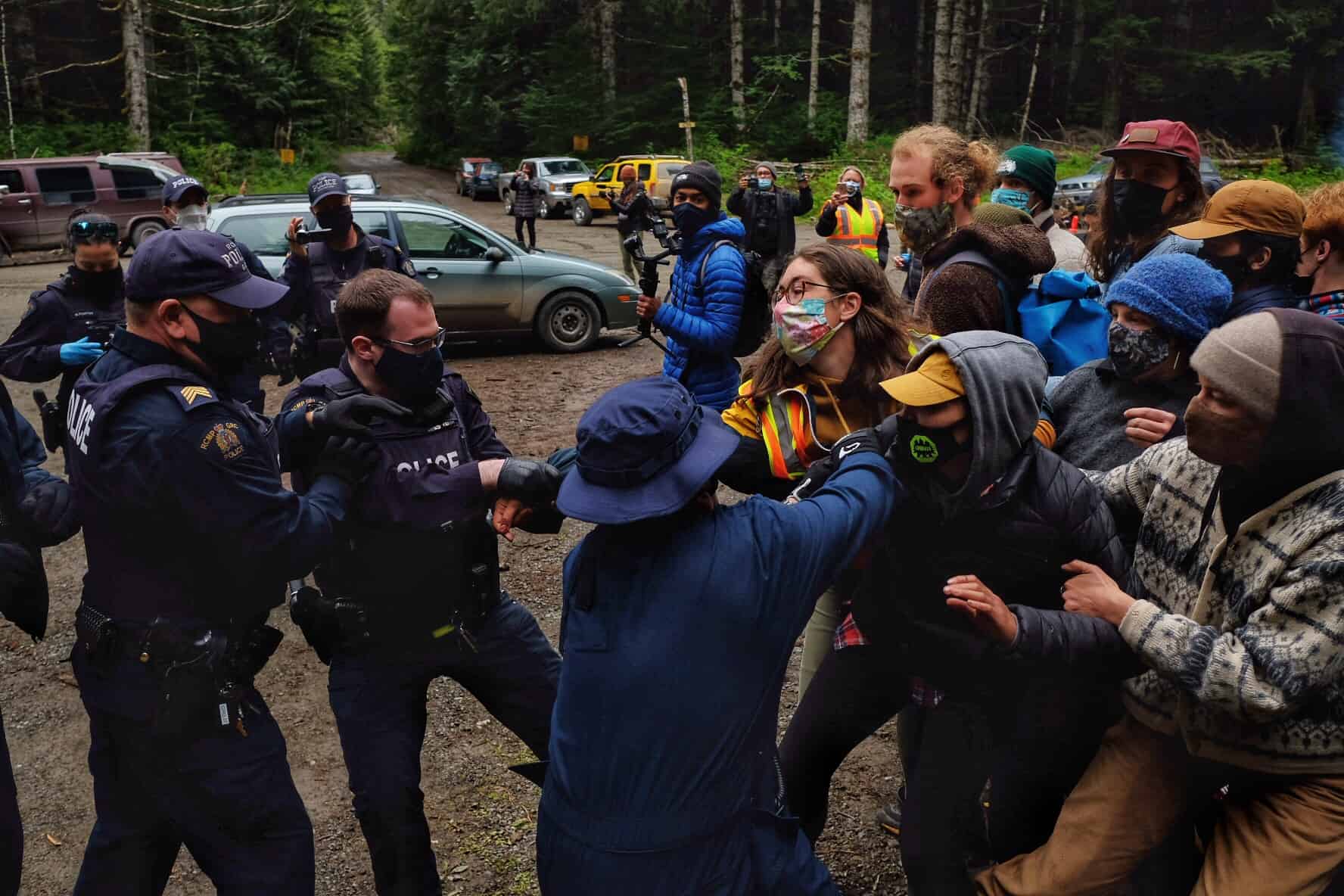
Legal observers and police liaisons were included in the 55 people arrested Tuesday, while people with police-approved media status were herded into a “pen” to witness.
It’s not even the latest — as more arrests have taken place since — in an ongoing standoff between RCMP enforcing an injunction won by the Teal-Jones logging company and a group of people joined together in what has been called “the last stand” to protect the last remaining old growth forests of the region.
Caycuse Camp is the name of one of eight blockades installed by a large group of people opposed to the logging of old growth forests in Pacheedaht and Ditidaht territories.
While Frank Queesto Jones and Chief Councillor Jeff Jones have been documented for speaking out against the logging protests, Bill Jones has publicly criticized their authority to speak on behalf of his community, calling a public letter released by the men intentionally “contradictory and confusing,” according to a media release statement.
‘That’s not a thing they can do’
Access to the Caycuse Camp, which is about an hour drive down logging roads from Port Renfrew, has been restricted by police since last Monday since police blocked off the road with tape and vehicles.
The Caycuse Camp exclusion zone has been the site of a number of arrests over the past week, as police enforce the injunction with varying methods.
“People decided to peacefully demonstrate their opposition to the exclusion zone and would step off if they were asked,” Torrance Coste, national campaign director for the Wilderness Committee tells IndigiNews over the phone the day after the arrests.
“A massive RCMP force came from both directions, two dozen vehicles, about 50 to 60 officers, and said everyone here is being placed under arrest.”
Coste says he was one of six witnesses who were eventually separated from the rest of the group and herded into what RCMP referred to as a “media pen,” where they could document the proceedings from a distance.
Coste says he hasn’t witnessed any of the other enforcement actions, which have been taking place since May 17. But he knew this time was different, he says, due to the “intense and oppressive” mood in the atmosphere Tuesday morning.
The group had arrived at the scene early, just after 6:00 a.m., at the Caycuse Camp exclusion zone on May 25, Coste explains.
“This group set up outside the exclusion zone,” Coste says.
Police arrived a few hours later.
“Police approached from the direction of the exclusion zone and read over a bullhorn part of the injunction, saying that ‘blocking the road was violating the injunction, and that if people continued to, they would be subject to arrest.’”
Around 50 to 60 officers showed up, and as police approached the group, police liaisons (people designated to lead dialogue with the police), sporting their bright vest, walked up to the police.
But the RCMP told them everyone was being placed under arrest, Coste says.
“The legal observers were like, ‘what? That’s not a thing they can do,’” Coste says. The police liaison who expressed opposition to the statement was grabbed by a police officer and told “we’ll start with you,” Coste recounts.
After an Indigenous police liaison was arrested, events quickly escalated, he says.
“Not many people have footage, because we were all trying to not get arrested,” Coste explains. “They were very clearly pushing people out of the way to specifically grab people in legal observer vests and Indigenous youth.”
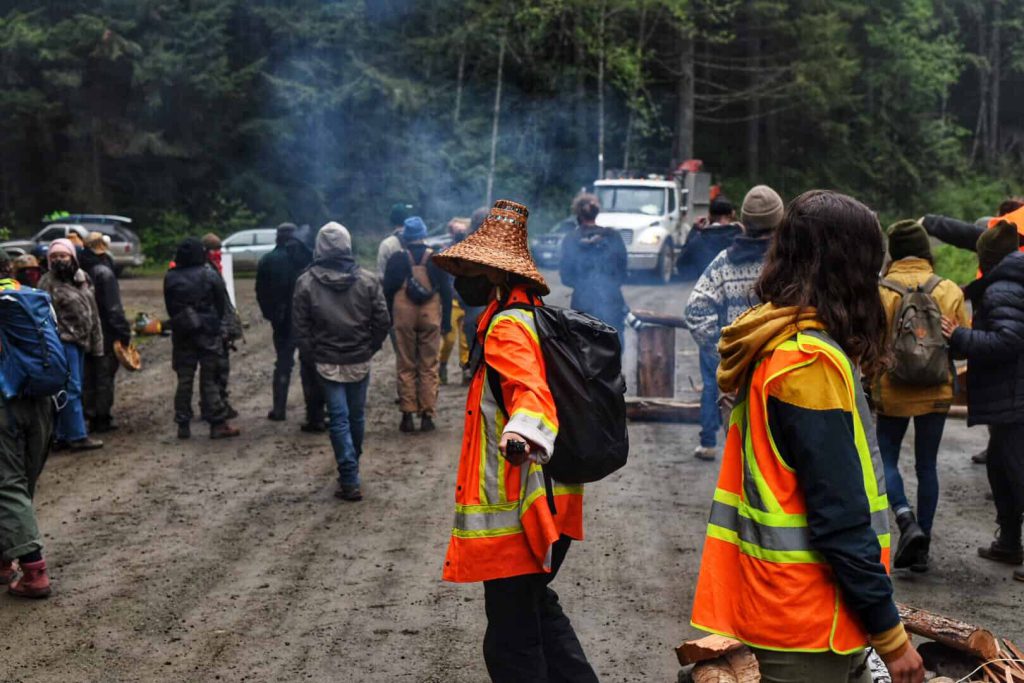
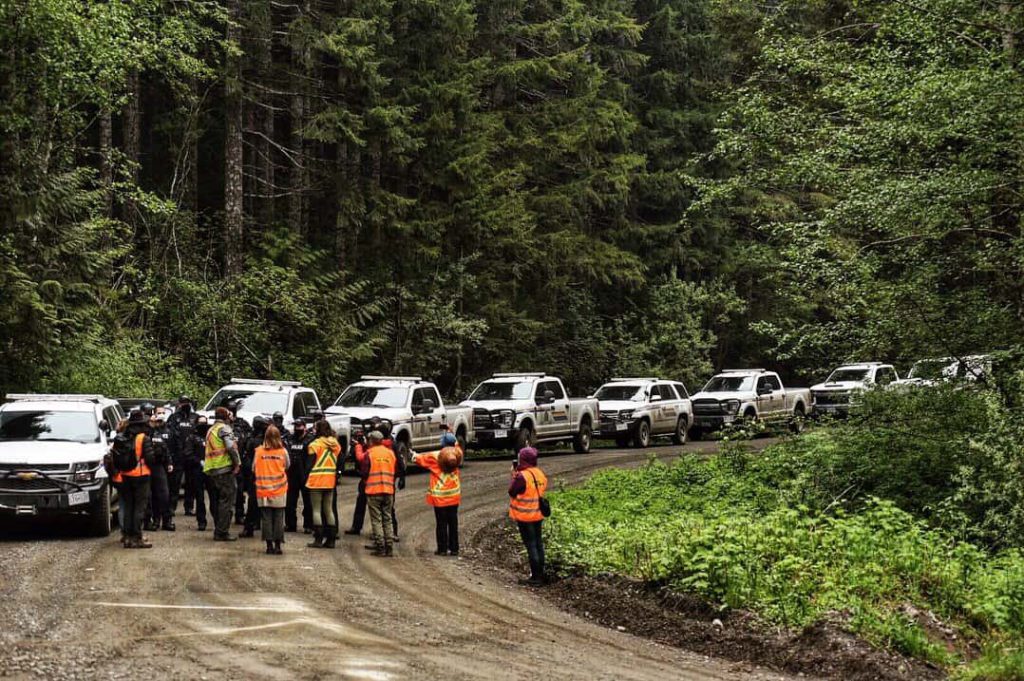
BC RCMP Media Relations Officer Chris Manseau confirmed that police read the court-ordered injunction to the group in a statement released on May 26 at 2:45 p.m.
“As of last night, approximately 55 individuals were arrested for breaching the injunction (civil contempt of court), 9 of whom were repeat arrests from previous days,” Manseau writes.
“More arrests are pending, as individuals continue their blockade today of the roadway on McClure Forest Service Road. Attempts are being made to process all arrested individuals at the Lake Cowichan RCMP Detachment.”
Manseau says an additional four people have been included in the arrest total from Saturday, May 22.
Since enforcement began last week, the RCMP have arrested an approximate of 112 people, according to Manseau. All news releases on the Fairy Creek Watershed police enforcement issued to date can be found on the Lake Cowichan RCMP Detachment website.
Mike Graeme is a freelance journalist who joined Coste in the controlled media area Tuesday, and who has been on-the-ground reporting for the past week. He tells IndigiNews that while there were cars initially blocking the road, things could be easily moved to let vehicles through if needed.
Legal observers and police liaisons were “immediately scooped up” by police, Graeme says, echoing Coste’s account of the event.
“You could definitely see they were targeting these people and the Indigenous youth,” Graeme says during an Instagram live interview.
“It was terrifying,” Coste says.
Some of the Indigenous land defenders present jumped in cars, as those who felt their lives were in less imminent danger stood around to protect them, Coste says.
“Once the police had everyone contained, they set a hard line and stopped advancing,” he says. “Things slowed down a bit, they asked for police liaisons to talk. Six of us made the case that we were observers or media.”
Police taped off an area and put those six people inside, saying everyone present was to be arrested, Coste says, including legal observers and police liaisons.
Graeme says police told him initially that he wasn’t one of the people allowed to document behind their designated line, because police didn’t know who had been blocking the road.
“They said they hadn’t confirmed that we weren’t part of blocking the road,” Graeme says. “We were pretty much guilty until proven innocent at that point.”
They were getting ready for arrest, but then the police came back and said they had the choice to go behind the line and not be arrested, Graeme says.
“It was really strange how different the behaviour was, compared to previous… I have been covering arrests for a week, and it was much different treatment.”
About six to eight people were arrested at a time, Coste says, and taken into vehicles and transferred off site.
“Around noon some other media showed up, they were doing calm orderly arrests at that point,” Coste says, as opposed to the “more intense arrests” earlier that morning.
Those in the “media pen” were told they could leave anytime or stay, but they didn’t want to leave with the Indigenous youth still there, he explains. The whole process took about 11 hours, he estimates.
Coste stayed around until about 6:00 p.m., when he says all the Indigenous youth present had been taken in the police vehicles to the RCMP detachment in Lake Cowichan.
Though he’s not a lawyer, Coste says he is concerned about the fact that police are arresting land defenders, legal observers and police liaisons, both inside and outside the temporary exclusion zone they have set up, claiming it a necessary part of the court-ordered injunction.
“Protesting, even within the injunction zone, isn’t illegal,” he says. “They said blocking the road was a violation and you could be subject, and if people didn’t clear the area there would be arrests, but that’s not what happened, they just came and arrested everybody.”
During other enforcement actions that have taken place since May 17, people were presented with a choice, to stay and face arrest, or to leave the area, but people weren’t given that choice this time around, Coste says.
“We have a right to civil disobedience and we certainly have a right to protest and not violate an injunction in terms of obstructing access, but here that choice wasn’t really given,” he says.
Another concerning aspect of the day, Coste says, was that a number of police officers were sporting “thin blue line” patches, a symbol that represents the way police put their lives on their line in their work. However the symbol has become controversial because of links to far-right movements and reports say it has been banned for on-duty RCMP officers.
“This, combined with hands casually resting on guns, intimidating posturing and the sheer number of cops created a heavy and oppressive feeling,” Coste says.
He says he felt “anxious, afraid and intimidated,” but “can’t begin to imagine how horrible” it must have felt for those who were more vulnerable. Though he acknowledges he hasn’t been on the frontlines of this movement during similar enforcement actions, he says this day had a “clear Indigenous leadership component.”
“It’s hard not to link that to the disproportionate response by the RCMP,” Coste says.
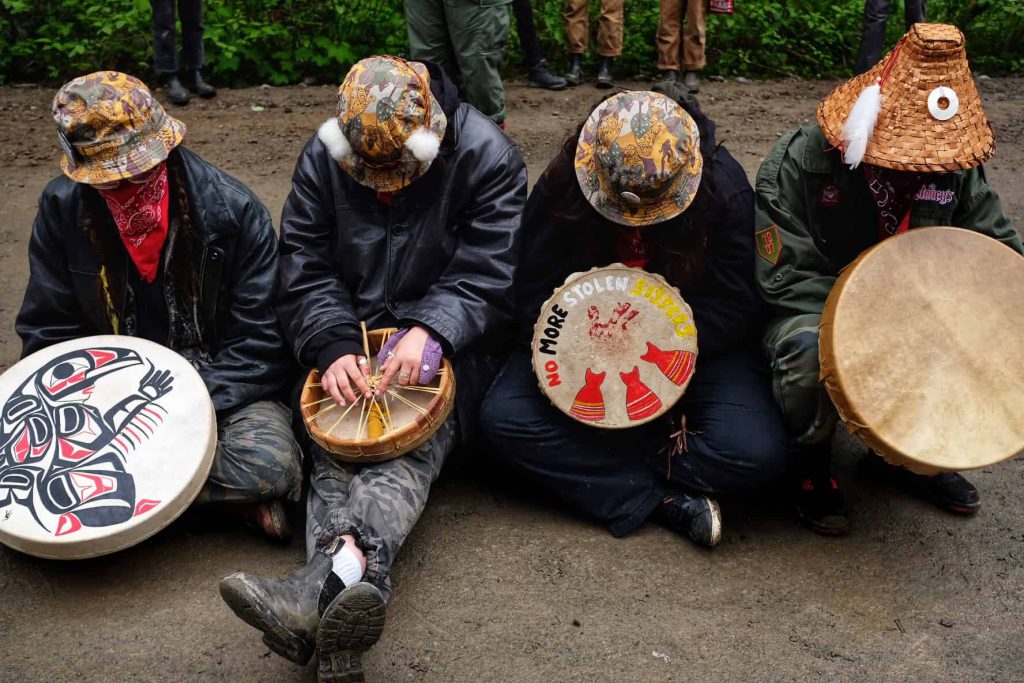
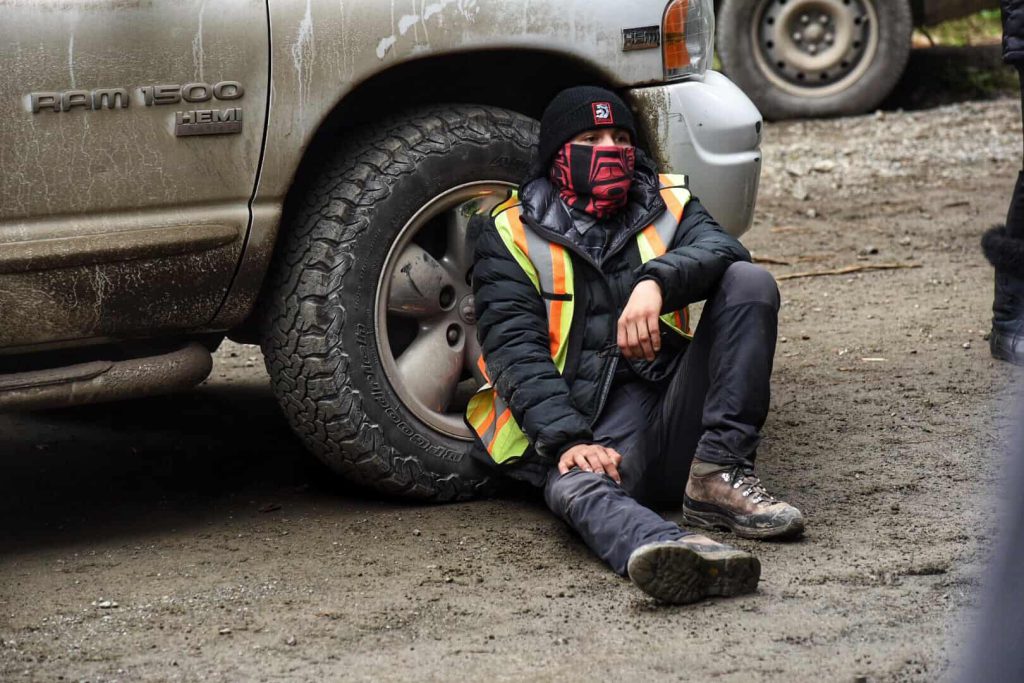
‘Enough is enough’
The injunction being enforced by RCMP makes obstruction of logging activity illegal, but Coste says those expressing their concern about logging weren’t doing that.
“Access to protest sites is not one of the things the injunction makes illegal,” he says. “If demonstrators or media are planning to go out there and document the people who are making that choice, we should be able to do that and have access.”
On May 18, the Canadian Association of Journalists (CAJ) released a statement, calling on the courts to limit the powers of the RCMP and police, when issuing injunctions.
“The RCMP and other police agencies have failed to respect the Charter of Rights and Freedoms when executing injunctions,” said CAJ president Brent Jolly.
“The key problem stems from a clause typically included in most injunctions which gives police broad discretionary powers to detain or arrest anyone violating the order or interfering with police actions,” the release states. “In spirit, the clause is meant to allow police to remove demonstrators who are the subject of the injunction. However, the police have repeatedly used the cause to deny access to journalists, to arrest them, or detain them.”
On May 24, the CAJ, along with a coalition of news organizations and press freedom groups, including IndigiNews, is going to court to challenge the RCMP’s restrictions on media access as a part of the Fairy Creek blockades.
“Over the past week, we’ve repeatedly seen the RCMP shift the goal posts on how it plans to allow journalists access in order to cover this important public interest story,” said Brent Jolly, CAJ president. “Every day is a new day with new excuses from the RCMP about why access is limited. Enough is enough.”
Author
Latest Stories
-
‘Bring her home’: How Buffalo Woman was identified as Ashlee Shingoose
The Anishininew mother as been missing since 2022 — now, her family is one step closer to bringing her home as the Province of Manitoba vows to search for her
-
Amid climate impacts, leading Secwépemc firekeeper shares ‘a better way of looking after the land’
In a time of worsening wildfires, Joe Gilchrist says cultural burning ‘needs to be multiplied hundreds of times’ — returning to Indigenous stewardship




